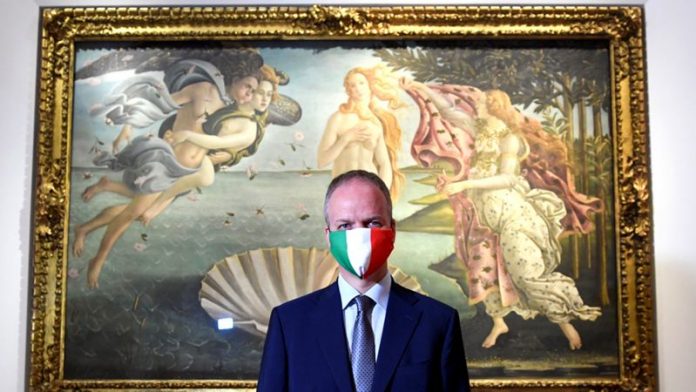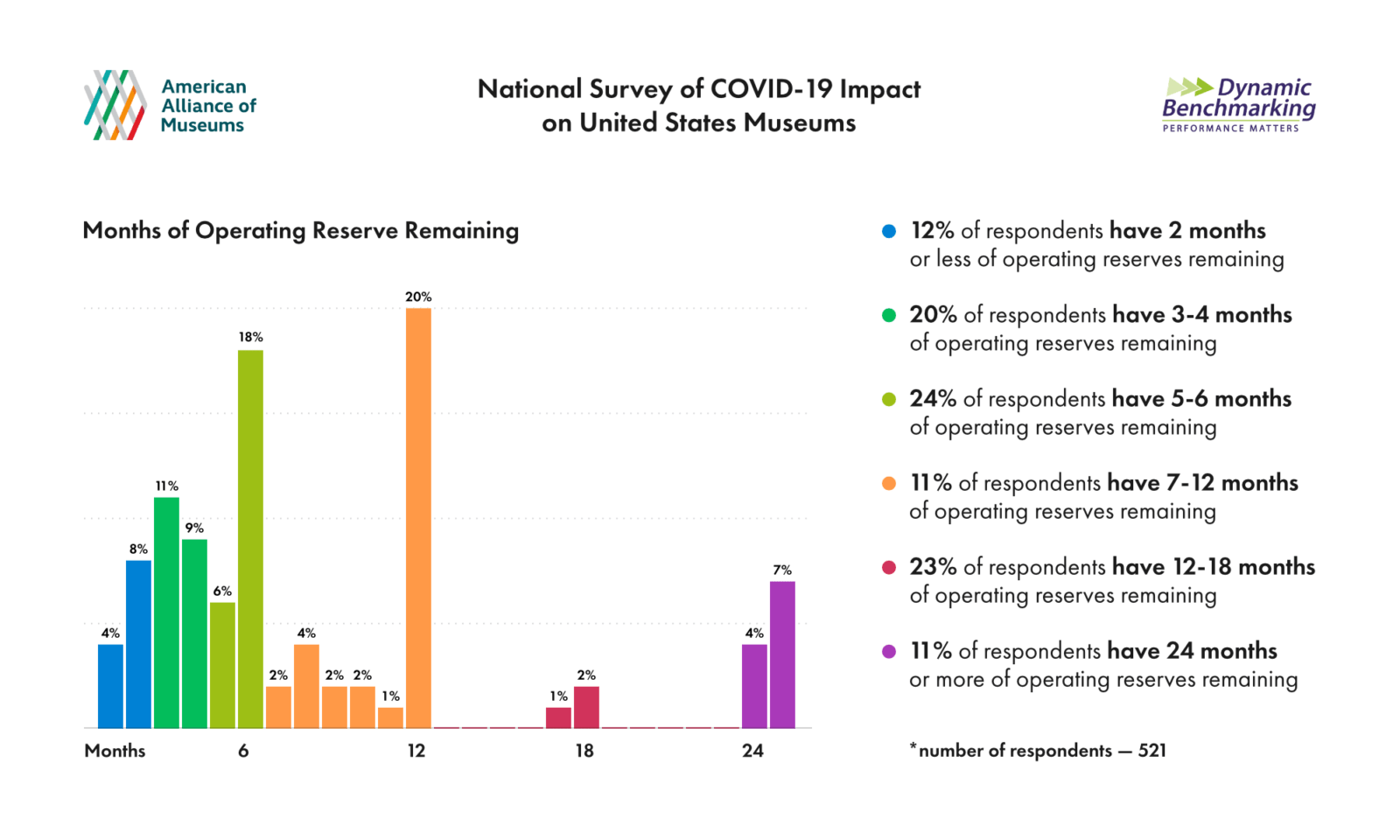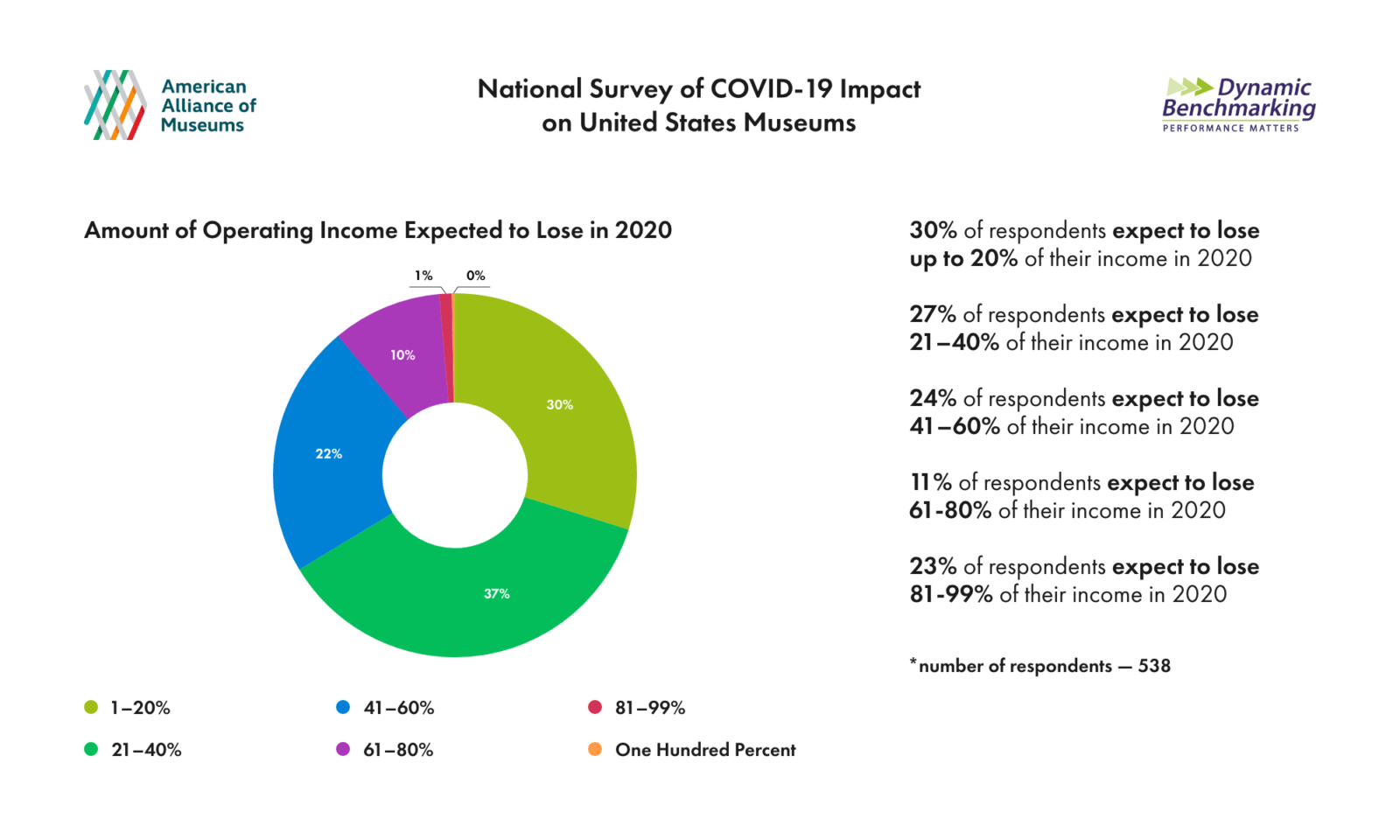
England, Denmark, Greece, and Italy plunge into a lockdown, a curfew is introduced in Cyprus, still prosperous Norway beats the alarm, a record sickness rate in the U.S.
Experts from UNESCO and the International Council of Museums are concerned that one in eight museums in the world may not be able to resume operations after the coronavirus pandemic. This is stated on the UNESCO website.
“Almost 13% of museums around the world may never open,” the report says.
It is noted that the strongest blow, according to the forecast, will fall on museums located in poor countries.
It is also noted that 90% of all museums (more than 85 thousand institutions) closed during the epidemic. In addition, only 5% of museums in Africa and small island developing states were able to offer online content to their audiences.
In this regard, UNESCO will hold a series of discussions on museums to explore strategies to support museums and professionals.
Will gamification help to save museums in lockdown conditions?
The year 2020 turned out to be very difficult for everyone who holds exhibitions, concerts or excursions. Many museums risk simply to close down in the near future, and the financial well-being of others will remain in jeopardy even after the pandemic. Will the industry be able to use digital opportunities to attract an audience and create new sources of income during the crisis?
Back in June, the American Museum Alliance interviewed site directors from across the United States. At that time, a third of respondents said they either did not know if they would survive the pandemic, or they assessed the risk of closure in the next 16 months as significant. More than half of the U.S. museums have financial reserves for no more than six months, only one in ten can survive without visitors for more than a year and a half.
 American Alliance of Museums
American Alliance of Museums“As a result of the COVID-19 pandemic, the entire cultural sector in the UK is at risk of a disaster comparable to a fire,” said Helen Bonzer Wilton, executive director of the Mary Rose Museum in Portsmouth, which had to close for visitors and disband almost all employees from their homes as early as June. In the same vein, Tristram Hunt, director of the Victoria and Albert Museum in London, warns of the real prospect of “closing down small independent museums whose very existence is really threatened by forced isolation. The problem is exacerbated by the structural problem of museums, a traditional business model that does not allow for adaptation to limitations and the need to maintain distance.
BUSINESS MODEL FOR SURVIVAL
In the United States and Western Europe, the state usually accounts for more than a quarter of museum funding. The rest comes from ticket sales and donations from benefactors: foundations or individuals. It is clear that the capacity of museums will depend on the epidemiological requirements, in addition, in the largest of them the majority of visitors are tourists. That is, museums depend largely on when normal communication between countries will resume and how many people will be able and willing to travel as before. New costs will also require compliance with new security protocols.
 Источник: American Alliance of Museums
Источник: American Alliance of MuseumsSadly enough, we have to admit that at the level of 2019 museum attendance in a few months will not return. It may take a few, if not all ten years. As a result, the traditional museum business model with an emphasis on selling tickets and attracting benefactors was in a critical situation.
INTERACTIVE ART
In the absence of a sufficient number of visitors, the only thing left to the museum (unless it is ready to sell the collection) is to search for interaction and monetization of the audience through digital technology. For this purpose, it is necessary not only to create attractive content but also to establish reliable channels of its distribution, increase interactivity and provide clear cycles of feedback, which will allow developing over time.
Gamification of collections can be a powerful tool for museums – the experience of popular video games says that prosperity can provide both visual and technical complexity and social elements embedded in the process. Minecraft and Fortnite are developing in two directions: on the one hand, they offer the user an exciting gaming experience, and on the other hand, they offer live communication with other players, acting as social platforms.
The idea of gamimizing collections to attract new audiences and increase engagement is not new in itself. Some museums used elements of the most famous computer games for this purpose. For example, the Tate Worlds project, launched by Tate Gallery in 2015, was built on the Minecraft platform.
Tate’s specialists tried to combine educational goals with familiar elements of Minecraft: adventure maps, search tasks, and roller coaster. This approach was to inspire users to learn more about works of art, especially since Minecraft gameplay should stimulate imagination and curiosity. “Tate Worlds is different in that it does not try to teach. Instead, it leverages the player’s creativity and natural curiosity to inspire their imagination and allow them to discover artists, their work, and the cultural context around them,” thought-leading artist and project manager, Adam Clarke.
Another interesting example of art gamification is the social experiment Place, organized by Reddit in 2017. For 72 hours on a million-pixel canvas, users could paint one point every 5-20 minutes. After three days the joint painting “Place” was frozen in its current state. The event was attended by more than a million users, and the final result showed the strength of a lively collective effort to create a work of art. With this project, Reddit also demonstrated the potential of joint experience to attract an audience.

Museums can monetize game projects in several ways: through paid subscriptions, licensing of the items of their collection for different game formats, or in-game purchases, through paid one-time access to interactive events in real-time.
There are also arguments against gamification: interactive experiences can distract from the museum context; moreover, not everyone seems to find them attractive. However, no one assumes that museums should abandon exhibition spaces, genuine artifacts, traditional events, and atmosphere. Additional digital opportunities can only contribute to this by simply allowing museums to earn a little more.
Lockdown in Europe
In England, Thursday began a second lockdown, which will last until at least December 2. All stores have closed, except food stores, bars, restaurants, gyms, and all entertainment facilities. Transport is still operating in normal mode.
The population is asked not to leave the house without an emergency. But unlike the first lockdown, this time the British government decided not to close schools and universities.
In the past 24 hours, the number of covide infections in Britain has increased by another 24 thousand, 378 people have died – this is slightly lower than the day before, when a kind of anti-record of the second wave of the pandemic was set: more than 25 thousand fell ill and 492 died.
On Thursday, the Finance Ministry announced it was extending its monthly payment program for workers on forced leave until the end of March. The Bank of England is providing an additional £150 billion to support the British economy.
The authorities of Denmark declared about quarantine in some areas of the country because of the mutation of coronavirus at the lodges, which makes it possible to transfer it to a person. Denmark is the world’s largest manufacturer of mink fur, which is exported mainly to China and Hong Kong.
According to Danish authorities, the mutation may affect the effectiveness of any future coronavirus vaccine.
In seven municipal districts of the North Jutland region, bars, restaurants, sports facilities will be closed, public transport traffic will be stopped. Restrictions will take effect on Friday and will last, tentatively, until December 3.
WHO Emergency Programme Executive Director Michael Ryan called for a full investigation into the Covid-19 outbreak on mink farms. WHO called for an investigation into how Covid-19 was transmitted to animals, as the situation shows that any animal farm in Europe could be at risk.
On the eve, the Danish authorities decided to cull all 17 million Minks to contain the infection. Partial decontamination of dens began at the end of October after it turned out that many of them were infected with the coronavirus.
Spain and the Netherlands, where they also raise dens on an industrial scale, have begun to test their farms.
Greek Prime Minister Kirios Mitsotakis announced on Thursday that the country will start a new national lockdown on Sunday, but the schools will continue to operate. Wearing masks is mandatory in public places.
The curfew returns to Cyprus. Bars, restaurants, and shopping centers must close at 22:30. In restaurants, visitors must now wear masks until the waiters bring food.
Norwegian Prime Minister Erna Solberg called on Norwegians to refrain from traveling inside the country against the background of a new spike in disease.
In the past few days, the situation has deteriorated significantly in some parts of the country, and the total number of people falling ill in the last week was a record since the beginning of the epidemic. So far, the epidemiological situation in Norway has been considered one of the most favorable in Europe.
In Italy, the entry into force of the lockdown is postponed for one day – until Friday. A statement from the office of the Prime Minister said that this small delay should help Italians to complete preparations for weeks of strict restrictions, for example, to move to an area where people prefer to be in the near future.
From Friday, Italy will be divided into 20 regions, each of which will be given a color corresponding to the level of epidemiological threat – red (high level), orange (medium), and green (low). The workload of local hospitals is also one of the factors.
Curfews are being introduced throughout the country, museums and exhibitions are being closed, and shopping centers will only be open on weekdays. The number of public transportation on the streets is decreasing, and high school students are returning to online education.
The situation in the world
More than 100 thousand new cases of Covid-19 have been registered in the USA in the last 24 hours. More than 1100 people died in one day: this includes deaths directly from coronavirus, as well as from chronic diseases exacerbated by infection.
There has also been a significant increase in the number of hospitalized patients. Currently, there are more than 50,000 people in hospitals across the country with Covid-19 diagnosis.
Chinese authorities are again imposing entry restrictions on citizens of several countries, in particular Britain and Belgium. For those coming from the USA, France, Germany, Australia, Singapore, and Japan, strict rules of passing Covid-19 tests apply.
In some cases, it is necessary to pass the test twice: in your country a certain number of hours before departure and on arrival to China. In addition, there must be two types of tests – PCR and antibody test.
In March, at the peak of the epidemic, China banned foreigners from entering the country, but in September the ban was completely lifted.
“Nightmare before Christmas”: How much will it cost Europe lockdown 2.0
Europe had hoped to survive the winter without a full-scale lockdown, similar to the fact that in spring it plunged the world’s second-largest economy after the United States into the deepest crisis of the century. It didn’t work out.
The second wave of coronavirus covered half a billion people in countries. Europe said goodbye to the hopes of a rapid recovery and began to calculate losses in the hope of understanding whether lockdown 2.0 will survive quarantined business, population, and treasury.
The main victims of the first wave – restaurants, airlines, stores, theaters – warned that the new restrictions will finish them off. Others say that business has gained experience and is better prepared for the second wave, and the decline in the economy as a whole will not be so significant, because there is nowhere else to fall further.
But they all agree on one thing: the forecasts for spring and summer turned out to be too optimistic, it won’t be possible to recoup the losses of the current crisis quickly, and the economic recovery in winter will not continue as it was thought before, but will turn into a new recession.
Not least because it was impossible to think of a worse time for a new lockdown. Stores and restaurants were preparing for the New Year’s Eve season, Black Friday, Christmas sales, and noisy feasts. The usual season of gifts and illumination brings a quarter and a third of annual revenue to someone.
“The new lockdown promises retailers a nightmare before Christmas”, – described the mood of British store owners Helen Dickinson, the head of BRC branch organization.
“Every week of the previous lockdown has deprived stores of “nonessential goods” 1.6 billion pounds ($2 billion) of revenue per week. In the New Year’s Eve period these losses will be disproportionately greater,” she warned.
The situation is similar to airlines. They survived the first wave thanks to staff layoffs, aircraft sales, and – if lucky – government support. However, there is a limit to spending cuts, and without the financial support of money, they will be enough on average just over six months, outlined the prospects for mass bankruptcy of airlines in 2021 the International Air Transport Association (IATA).
In recent days, the almost full lockdown was introduced by France, Great Britain, Austria, Czech Republic, Spain, and Belgium. Germany has partially closed again, while Italy hopes to circumvent regional quarantine measures.
However, unlike in spring, schools and offices are still open almost everywhere. And the lack of severity of the restrictions is complemented by the fact that they do not have to be enforced by a part of the population weary of lockdown.
Second wave ‘with a discount’
As a result, the damage to the economy will be less significant, politicians and economists hope.
If in a few weeks of the total spring lockdown the French economy collapsed by 30 percent, this time French Finance Minister Bruno Le Mayor expects to cost half of the drop in business activity – by 15 percent.
Kristalina Georgieva, head of the International Monetary Fund, says the same.
“We do not expect a dramatic fall, as in March. Why not? Firstly, because the main damage to the sectors of the economy most affected by social distance has already been done. Secondly, we are gradually learning to function under the conditions of a pandemic, which allows us to partially retain business activity in the new lockdown,” she said.
“And thirdly, and most importantly – extraordinary anti-crisis measures of budgetary and credit nature.
According to the IMF estimates, the G20 states alone have spent more than $11 trillion to support the population, business, and healthcare – more than 13% of world GDP.
Once again, Georgieva called on the authorities of all countries, which can afford it, not to turn back the state support of the economy, as it is much easier to return it to normal life after an artificial coma, albeit expensive, than to allow irreversible changes and extinction of entire industries, and then try to revive the corpse.
“High unemployment and closed schools corrode human capital, bankruptcies result in loss of income, and rising debts undermine the government’s ability to pursue effective fiscal policy in the future. And the main burden falls on the poorest and most vulnerable,” IMF economists explained the cost of a protracted pandemic.
In doing so, the IMF supports physicians who see quarantine as the most effective way to stop a pandemic and warn that if nothing is done, the virus will spiral out of control.
However, the lockdown has enough opponents, as it rapidly destroys both national wealth and political capital of power.
Many see the second wave as proof of the ineffectiveness of large-scale sanitary restrictions. Dissatisfaction spills out into the streets: people protest in Italy, Spain, Poland, Czech Republic and Germany.
Others, on the contrary, see the return of the virus as a result of prematurely abandoning quarantine measures and cite China, South Korea and Taiwan, where the pandemic has long since ended.
In all three countries, the economy is recovering briskly and Taiwan has returned to pre-crisis levels. The island has democracy, 23 million people, and not a single local Covid-19 case since mid-April.
After the terrifying second quarter with a spring lockdown, the third (July-September) brought an impressive growth of almost 13%, which, however, did not allow to fully recover losses.
Business activity remained below the pre-shaped level, but economists expected less vigorous growth in the last, fourth quarter of the outgoing 2020. And they hoped that by mid-2021, Europe’s economy would return to its previous trajectory of increasing national wealth.
Not a merry Christmas
The measures announced in recent days – from bans on vacations and visits to the closure of museums, stores, restaurants, and gyms – have forced them to revise their forecasts.
Investbank Goldman Sachs expected economic growth of 19 Eurozone countries by 2.2%, but now predicts a decline of 2.3% and expects a long lockdown – three months minimum and relaxation not before February, the agency quotes an analytical note of the U.S. bank Reuters.
Similar forecasts were made by 18 economists of leading financial institutions interrogated by FT newspaper. Most expected growth in the fourth quarter, but now 17 of the 18 expect a decline – an average of 2.3%.
Even Germany – Europe’s largest economy, which coped with the crisis better than others thanks to strong industry and exports – will not avoid the sad fate and lose 1% of GDP, which will cost it 19 billion euros and 50 thousand jobs, the German Institute DIW calculated.
What to do and what to do, will be discussed on Tuesday by the finance ministers of the eurozone. They have killer antivirus tools in their arsenal, but Europeans are still unable to agree on how to use them.
We are talking about the EU budget of 1.1 trillion euros and an additional anti-crisis package for another 750 billion euros. They have been agreed, but not yet approved.
It is desirable to settle all disagreements and approve everything before the new year, so that the money, as planned, began to flow to the treasury of 27 EU countries from mid 2021 and fed the post-crisis economic recovery within a year and a half.
If this does not happen for some reason, it will be even worse, because these trillions have already been included in the forecasts, even the most pessimistic ones.
























